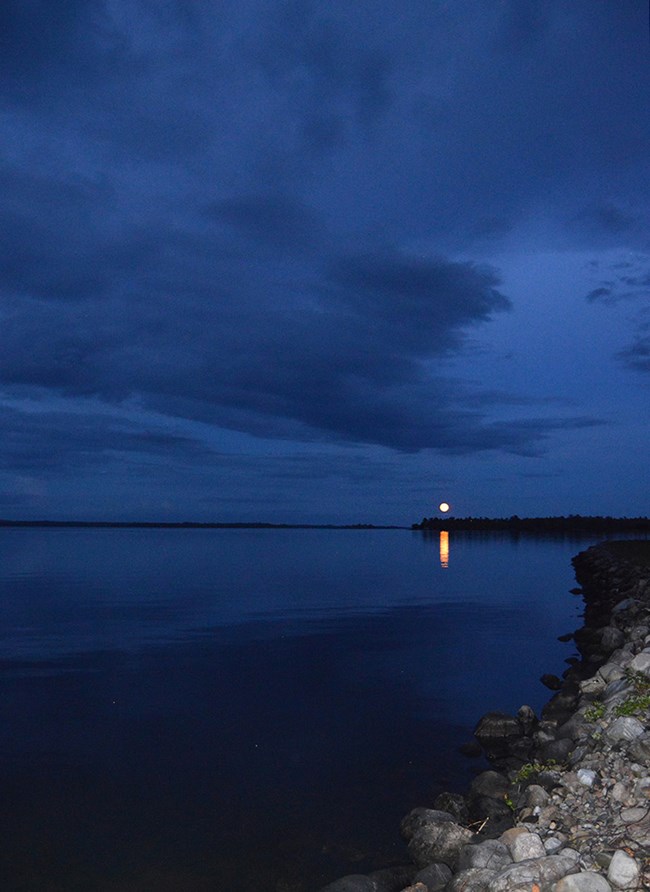
NPS A Designated Dark Sky ParkSurrounded by miles of lakes and wilderness area, the skies above Voyageurs are free from the excessive, misdirected, and obtrusive artificial light often produced in large urban cities. The northern dark skies in Voyageurs have historically been valued and observed by many people including the Anishinaabe, the bold and outgoing French-Canadian voyageurs, lumberjacks, gold miners, commercial fishermen, and present-day visitors. By becoming a Dark Sky Park, Voyageurs can better preserve the amazing cultural, historic, and natural resource that is our night sky. The First Step: Learn Your LightsTo become Dark Sky designated, Voyageurs partnered with the National Park Service’s Natural Sounds and Night Skies Division as well as the International Dark-Sky Association (IDA): the globally-recognized leading authority on combating light pollution. IDA’s mission is to preserve and protect the nighttime environment and our heritage of dark skies through environmentally responsible outdoor lighting. Not all lights are made equal. 

Left image
Right image
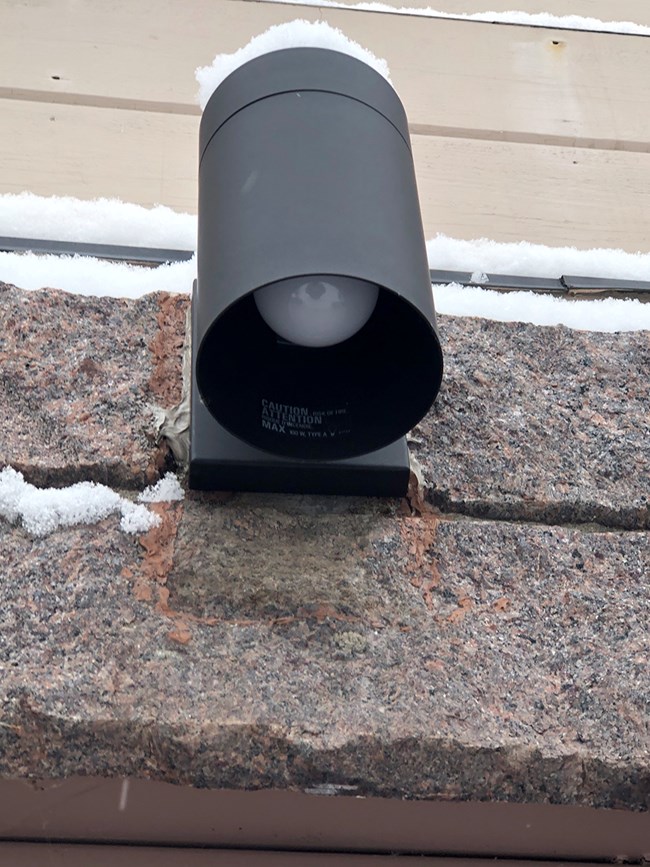
NPS Becoming a Dark Sky Park occurs in multiple phases. In Phase 1 the park’s goal was to increase the number of “dark-friendly” lights from 25 percent to 68 percent, with a long-term goal of obtaining 100 percent within the next 10 years (or preferably earlier). The Second Step: Measure the DarkHow dark is “dark enough” to be a Dark Sky Park, and how does darkness get measured? Over the last 10 years, scientists from the National Park Service’s Natural Sounds and Night Skies Division have provided Voyageurs with special equipment for the park to monitor sky quality and light levels. In addition, Voyageurs Conservancy has also been a major partner in providing financial support for dark sky monitoring equipment and the replacement of old lights with night sky friendly lighting. The Bortle ScaleThe Bortle Dark Sky Scale rates sky quality on a scale of 1 - 9. A rating of “Class 1” represents a pristine night sky, and “Class 9” represents a severely light-polluted sky in which only the very brightest dozen or so stars and planets may be viewed. Only a few areas in the lower 48 states display class 1 or 2 skies. The sky quality in many western national parks is class 3 or 4. Class 5 and higher skies are often found around large metropolitan areas. 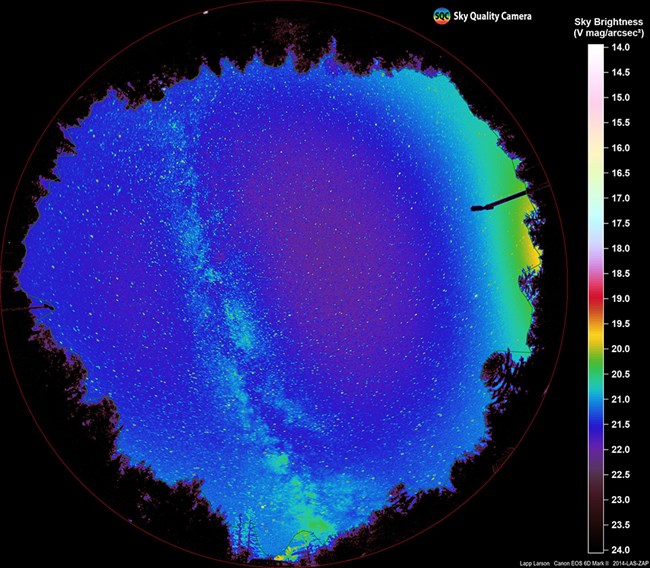
Image Credit: Lapp and Larson Sky Quality Meter Lens (SQM-L)The SQM-L is a hand-held device with a narrow-view lens for detecting light from the night sky. After taking a reading, the SQM-L reports a value in magnitudes/arcsecond. “Magnitude” refers to an object’s brightness (the object can be a star, a lamppost, etc.), and an arcsecond is a standard amount of space in which the light from an object is measured. Lower values represent a brighter sky, and higher values (up to 22.00) represent a section of dark sky free from the influence of light pollution. Charge-Coupled Device Camera (CCD)A wide-field CCD camera is a research-grade digital camera that captures the whole sky from one horizon to another through a series of circular images. The edges of these photos represents the site’s horizon, and the center represents the zenith (the area of night sky viewed directly overhead). 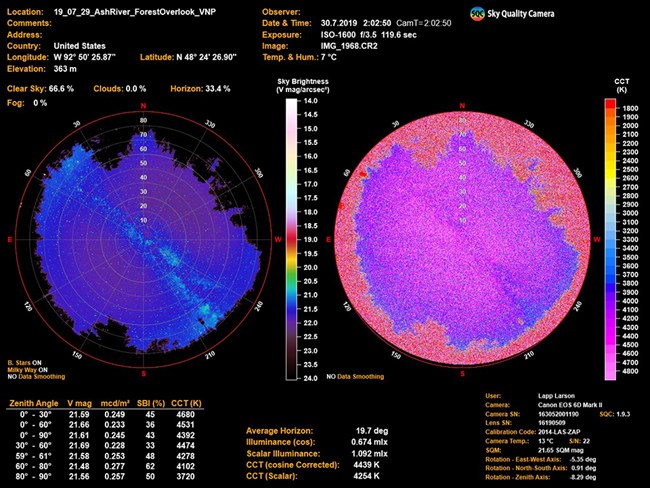
Image Credit: Lapp and Larson The devise then measures the brightness of the images based on a logarithmic scale and superimposes “false colors” over the photos (yellow, red, and white correspond to a brighter sky; blue, purple, and black correspond to darker sky). Artificial sky glow is always brighter near the horizon than at the zenith. For this reason, the outer edges of CCD images tend to be brighter than the center. The brightness of an area’s horizon substantially affects the overall light level at a site. 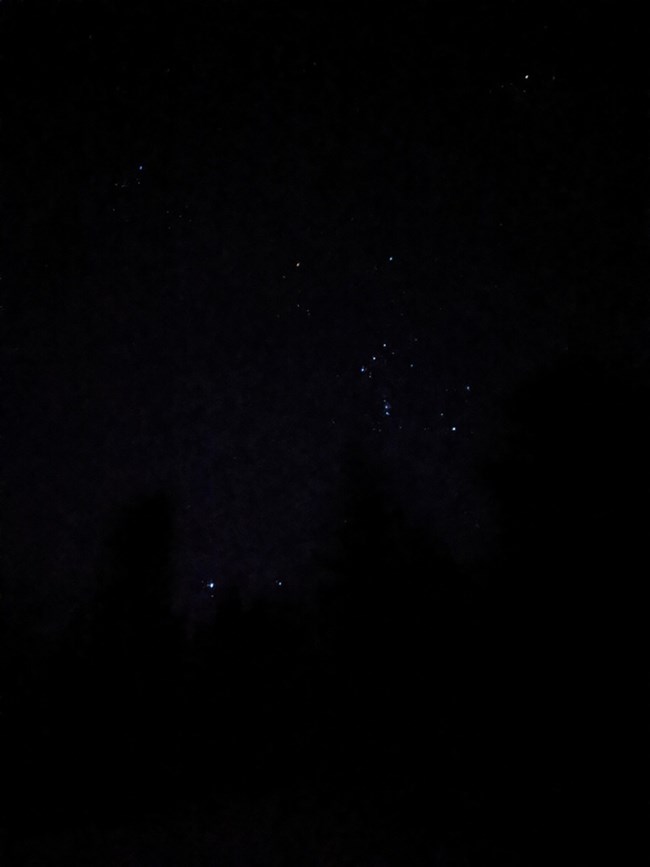
Image Credit: A. Mike Count the Stars: the “Visual Limiting Magnitude at the Zenith (ZLM)” MethodThe ZLM method is one of the most common ways to measure sky brightness, and it can be a good option for amateur astronomers who do not have access to special equipment. Brighter objects are represented by lower magnitudes (e.g.. very bright stars may be magnitude 2 or lower, and dim stars can have a magnitude of 6 or higher). To use the ZLM method, look up and calculate the magnitude of the faintest stars you see using an apparent or absolute magnitude equation. 
NPS / Lapp Exploring the DarkThere are countless ways to explore and enjoy Voyageurs at night. 1. Go StargazingSpend the evening searching for wonders of the night: distant planets, the luminance of the full moon, the International Space Station zooming overhead, streaking meteorites as they burn in the atmosphere, the river of stars that spans across the Milky Way, and the breathtaking Northern Lights. 2. Listen to the Voices of the NightMany species in the park are night-active, timing their activities to benefit from the darkness. A remarkable 30% of vertebrates and 60% of invertebrates are night-active. Listen for the chirp of frogs, the wail of loons, the low hooting of owls, and even the howling of wolves in the distance. 3. Learn the Stories of StarsFor thousands of years, civilizations around the world have observed seasonal patterns of stars appearing and disappearing across the horizon. Learn stories of the constellations that inspired people to navigate, explore, predict seasonal changes, and to portray lessons regarding their culture, religion, and ways of life. 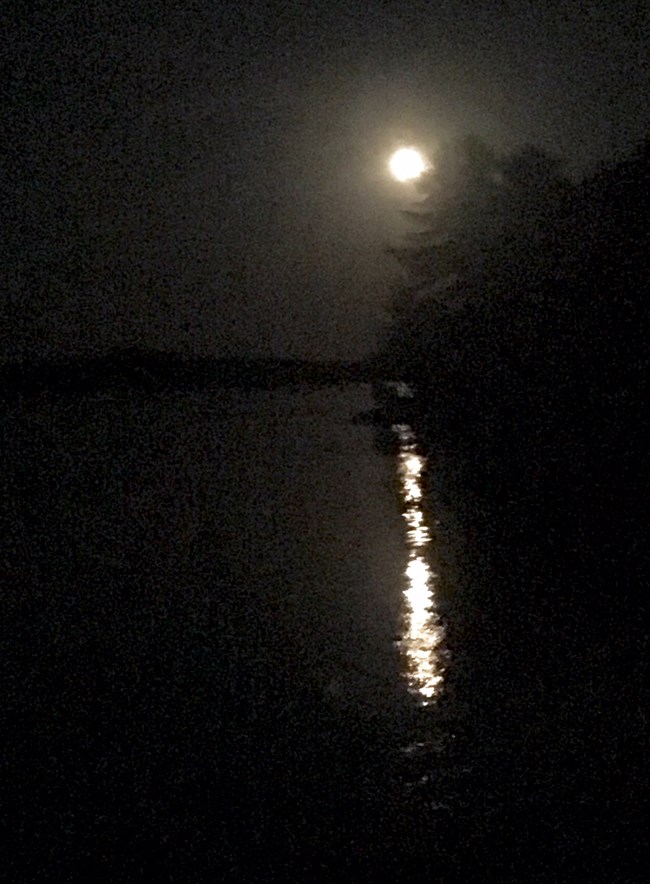
Image Credit: NPS / M. Challeen 4. Test Your Night Vision on the TrailTry going on a night hike. If you are nervous about being outside at night, bring a friend and/or a red light. You might be pleasantly surprised how well the human eye can see after dark. Several studies have shown that even in large cities, low-level lights are more effective and efficient for navigating streets (and even deterring crime) than bright, unshielded lights. 5. Go Camping and Sleep Under the StarsExposure to artificial lights (particularly the white wavelengths of sky glow) during regular hours of darkness can disrupt our bodies’ circadian rhythm, which is responsible in part for the regulation of sleep. Studies have alluded to the benefits of sleeping in natural darkness, including a lower risk of breast cancer, weight gain, and metabolic disorders such as diabetes. 6. Practice Exploring Dark Skies at HomeWe all benefit from darkness, and dark skies are not only for parks; businesses, residences, and communities can become dark sky friendly locations, too. Even simply switching your light bulbs can conserve energy, reduce light pollution, save money, and make your home more environmentally friendly. 
NPS LED lights produce virtually no heat compared to traditional incandescent light bulbs, which waste up to 80% of their electric energy in heat generation alone. A 6.5 Watt LED light saves 60-70% of the energy needed (and 90% of the economic expense) to produce the same amount of light as a 100 Watt incandescent light bulb. 7. Explore the Night in Autumn, Spring, and WinterWatch the stars from an ice road, go night skiing or snowshoeing, or simply start a campfire on the shore with your friends and family. Winter also offers an opportunity to view constellations that cannot be seen during summer nights. 8. Join Other Dark Sky EnthusiastsJoin an astronomy club, attend a night sky program in the park, or get involved with a group supporting Voyageurs’ Dark Sky designation like Voyageurs Conservancy. If you don’t want to join a group, simply coming up to visit and view the stars can create some amazing memories for you, and it also makes a positive impact on the park and local communities. Back to top |
Last updated: May 15, 2025
